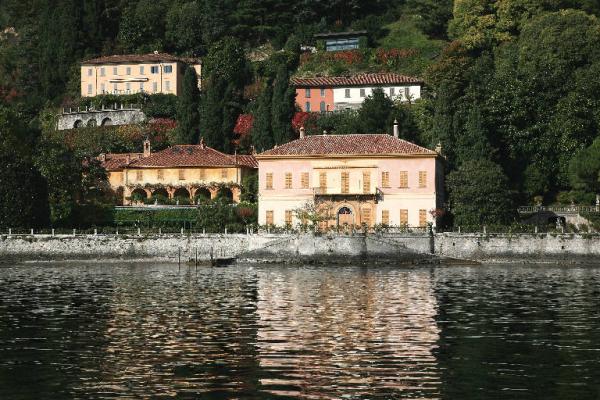
La villa ha origini antichissime: nel 1435 Giovanni Muggiasca, mercante di Como, acquistava un vasto terreno ricco di vigneti e di uliveti che si estendeva, poco lontano dalla città, dalla riva del lago fin alla vetta delle colline, incontrando anche la strada Regina, arteria di traffico fondamentale per i commerci diretti verso il nord. Su queste terre egli fece costruire non tanto una sfarzosa villa, quanto piuttosto un più modesto edificio rurale.
Nel 1630, a causa della peste, i Muggiasca fuggirono da Como al Pizzo dove ospitarono numerosi concittadini, i quali in cambio dell’ospitalità bonificarono il terreno dando inizio ai lavori per il parco. A metà del secolo anche l’edificio venne ristrutturato secondo un disegno dalle linee semplici, ma signorili. Ben presto, accanto al fabbricato, sorsero una casa da massaro con porticato e terrazza, i locali per la servitù, una serie di rustici, la stalla e la cantina.
A fine Settecento, l’abate Giovanni Francesco Muggiasca fece anche edificare un piccolo oratorio sul lato orientale della villa.
L’ultimo dei Muggiasca ad abitare la proprietà fu Giovanni Battista, poi vescovo di Como: egli designò quale unico erede l’Ospedale S. Anna di Como, che mise tutto il complesso all’asta.
Villa Pizzo has ancient origins: in 1435 Giovanni Muggiasca, a Como merchant, bought a large piece of land with vineyards and olive groves stretching. Not far from the town, from the lake shore to the summit of the hills, and also from Regina Street, a critical traffic artery to the direct trade towards North. On this land he built a magnificent villa not so much, but rather a more modest rural building.
In 1630, because of the plague, the Muggiasca fled from Como to Pizzo, where they hosted a number of citizens, which in return reclaimed the land starting to work for the park. By mid-century the building was also renovated with a simple but elegant design. Soon, next to the building, they built a farmer home with a porch and a terrace, rooms for the servants, a number of cottages, a stable and a cellars.
At the end of the eighteenth century, abbot Giovanni Francesco Muggiasca made build a small chapel on the east side of the villa.
The last of the Muggiasca to inhabit the property was Giovanni Battista, then bishop of Como, he designed as his sole heir the S. Anna Hospital in Como, which put the complex up for auction.


